
If you're faced with an asparagus fern turning yellow, then you'll be relieved to know that it is easy to fix.
For the most part, an asparagus fern turning yellow is a sign that the plant is under stress.
'Yellowing leaves are often the first sign that something’s amiss with your houseplants. For Asparagus Ferns, it’s usually a matter of finding the right balance—whether that’s adjusting your watering routine, increasing humidity in a dry, heated home, or refreshing the soil and nutrients for an older plant. A little attention to these details can bring your fern back to its heyday,' explains Jacob James from Grow Tropical.
Seven ways to stop your asparagus fern turning yellow
1. Overwating

If your asparagus fern is turning yellow, chances are you're overwatering it – after all, it is one of the most common garden mistakes to avoid.
'The most common reason for an asparagus fern turning yellow is excessive moisture which will lead to root rot, causing the plant's fronds to yellow and eventually die,' explains Richard Cale, founder of Leaf Culture. 'To save an overwatered plant, ensure the soil drains well and let it dry slightly between waterings. Don’t forget most plant parents kill plants by overwatering.'
The best way to avoid overwatering is to test the soil beforehand – simply insert a finger into the soil to feel whether it is wet or dry. If it is dry, then it's time for watering.
2. Underwatering
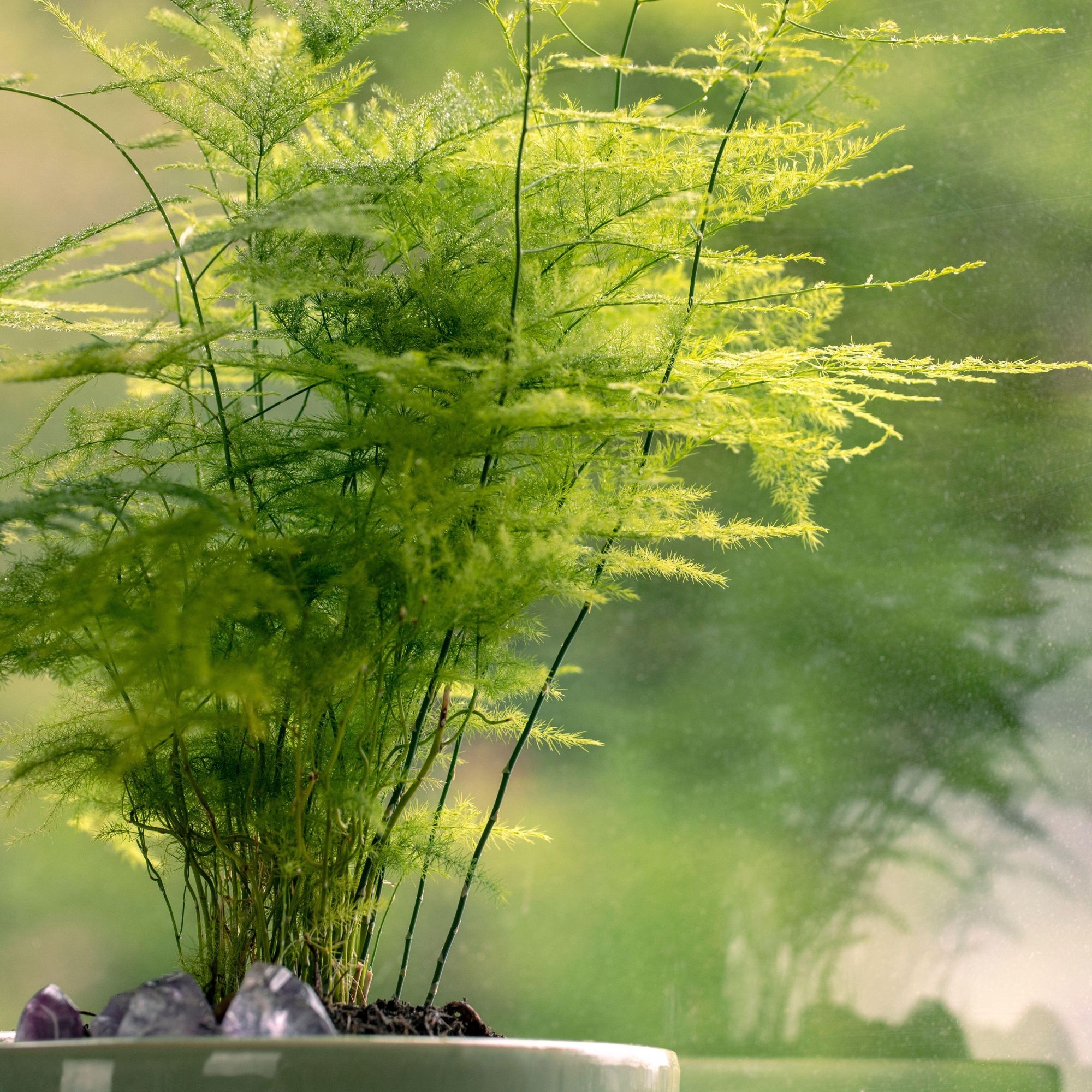
Though less common than overwatering, underwatering can also be a reason why your asparagus fern is turning yellow.
'Too little water can cause the plant to go into survival mode, with the asparagus fern turning yellow as it sheds foliage to conserve resources,' says Jacob James from Grow Urban. 'The key is to find that sweet spot where the soil remains slightly damp but well-drained.'
A moisture meter – like this one from Amazon – can help you maintain the optimum soil dampness and stop you from overwatering or underwatering your asparagus fern.
3. Humidity
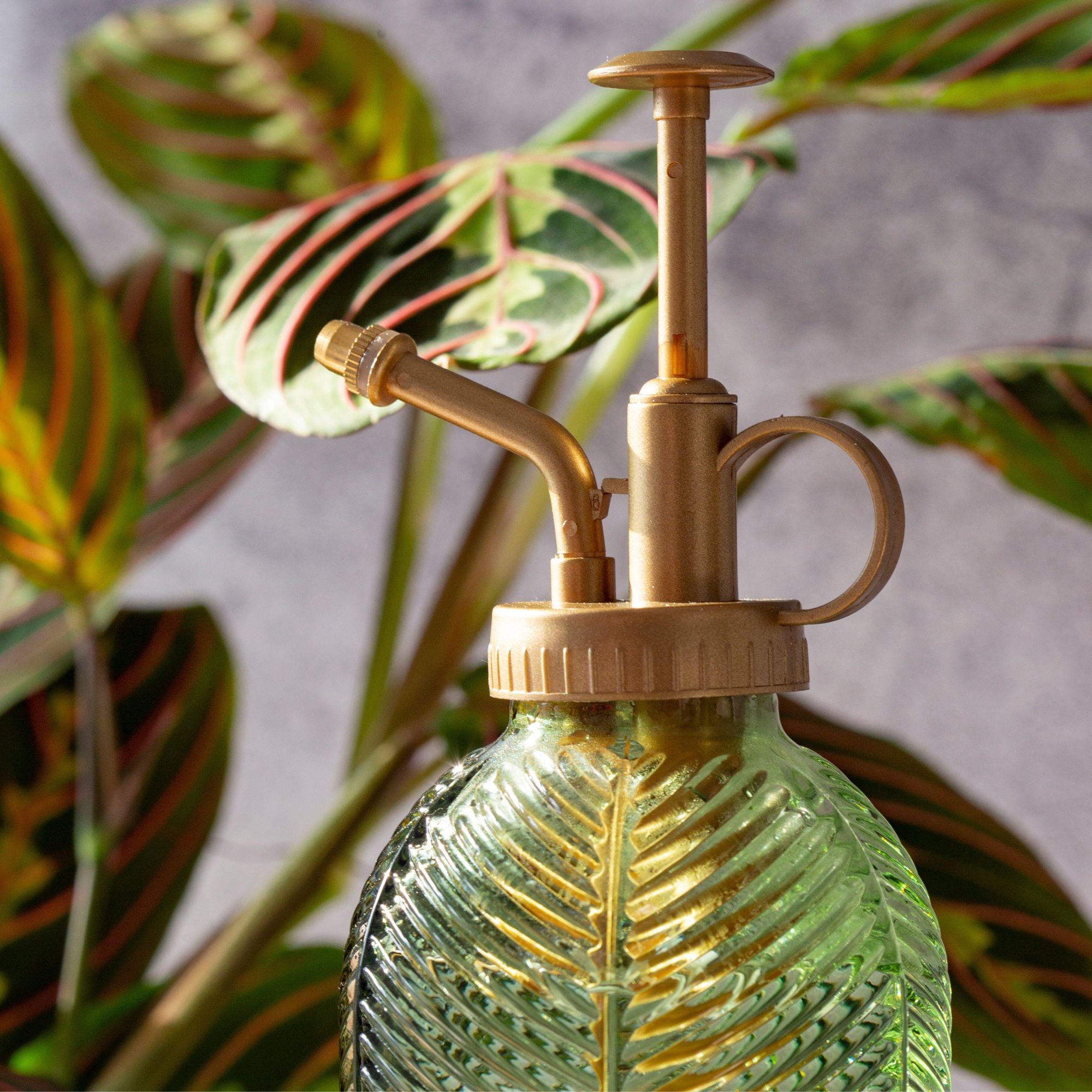
Once you've got the watering schedule sorted, humidity is the next biggest culprit for an asparagus fern turning yellow.
'Humidity is another crucial factor in maintaining the vibrancy of an Asparagus fern. In homes with dry air, particularly during winter when central heating systems are in use, you might find your asparagus fern turning yellow. Placing your fern in a more humid environment like a bathroom can help counteract this dryness,' says Jacob James from Grow Urban.
Alongside spider plants and peace lilies, asparagus fern is one of the best bathroom plants that absorb moisture.
You can also increase the humidity by misting or standing your asparagus fern in a tray with water and pebbles – just make sure that the bottom of the pot stands proud of the water.
4. Natural aging
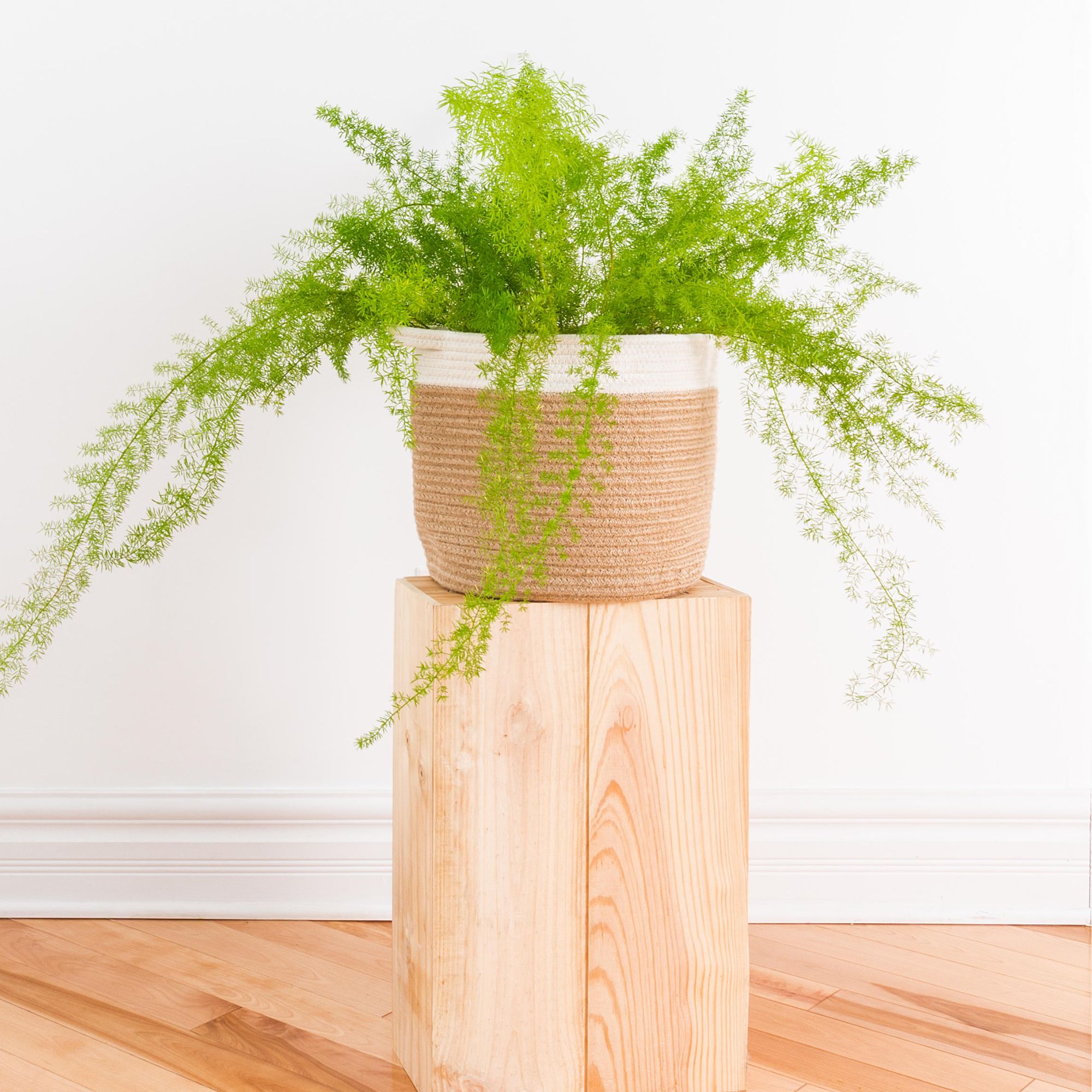
An asparagus fern turning yellow isn't always a cause for concern. If the yellowing is quite contained – just to one or two stems – then chances are it's due to the plant ageing and shedding its older fronds. Simply snip them off and let new fronds take their place.
5. Lacking nutrition
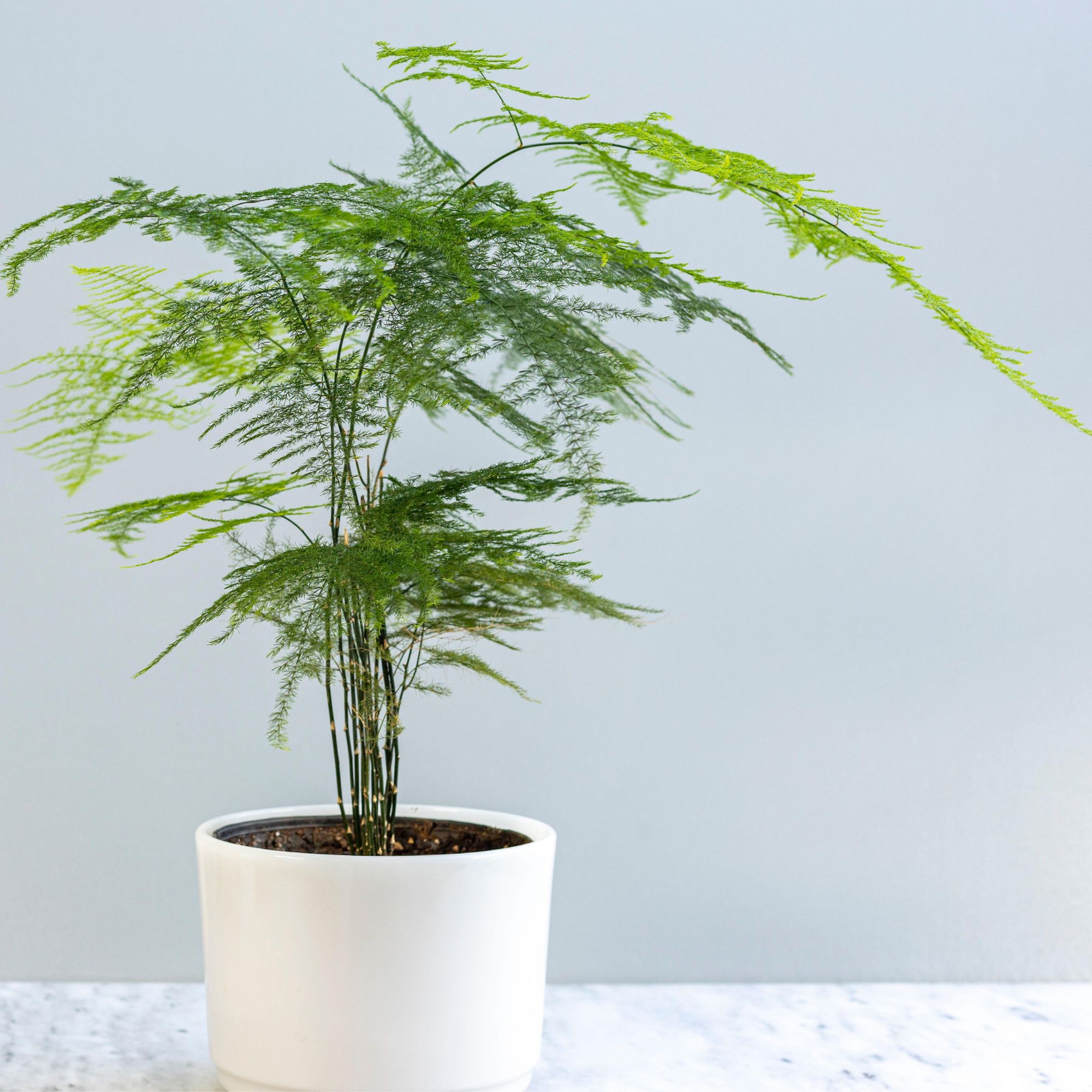
One of the most common container plant problems is a lack of nutrition. When grown in a pot, the nutrients in the soil are limited and will run out after a few months. You can supplement by feeding your asparagus fern with a generic houseplant feeder or natural plant fertiliser during the growing season.
'What's more, as the plant ages, its nutritional needs increase. If you haven’t repotted your fern in a while, or if it’s been a long time since fertilising, consider refreshing the soil and feeding the plant. This will provide the essential nutrients it needs to thrive, keeping those delicate fronds a healthy, vibrant green,' says Jacob James from Grow Urban.
6. Repot

Checking whether your asparagus fern needs repotting is easy; figuring out when to repot a houseplant only takes a few seconds.
Lift the pot and see whether roots are growing through the drainage holes. 'If many white roots are coming out of the bottom of the pot, that’s a good time to upgrade the pot size. Only do this during the growing season,' advises Richard Cale, founder of Leaf Culture.
If unsure, make sure you know how to repot houseplants before starting out.
7. Wrong place
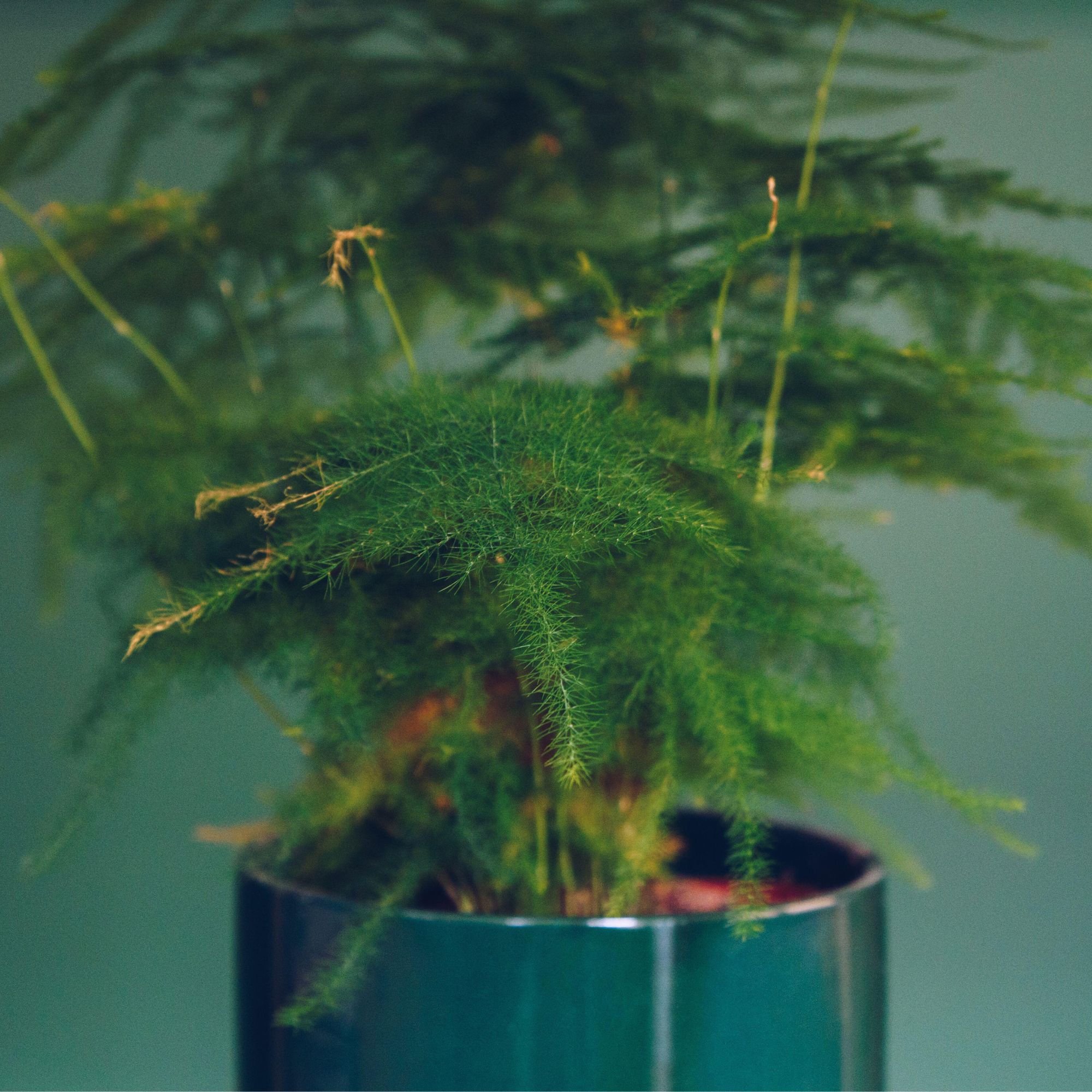
One of the ways you can stop your asparagus fern turning yellow is by reassessing its position. 'While asparagus ferns can tolerate low light, they do best in bright, indirect light. Too little can stress the plant out and similarly, too much will do as well,' explains Jacob James from Grow Tropical.
Equally, temperature can cause asparagus fern to yellow. 'Asparagus ferns prefer temperatures between 15-25°C. Exposure to cold drafts can stress them out,' adds Jacob.
FAQs
How do I fix yellow asparagus fern?
You can fix yellow leaves by pruning them off – this will visually improve the look of your asparagus fern. However, if you don't get to the root of the problem, you'll face more yellow leaves in a few weeks time.
Start by assessing the soil. The most common cause is overwatering. Insert at finger into the soil to test the moisture levels. If it feels wet, reduce the watering frequency – only watering when the soil feels dry. Also ensure that the plant is not sitting in water – whether from a tray or cover pot.
How do you know if an asparagus fern is overwatered?
Limp, wilting, yellowing leaves paired with soggy soil is a key indicator that your asparagus fern is overwatered. To remedy this, allow the soil to dry out and reduce the watering frequency.







